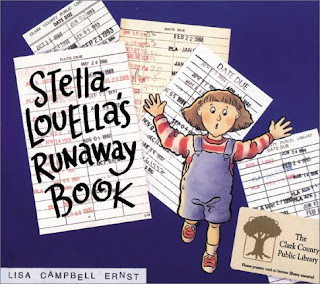Tom Hanks' collection of short stories contains seventeen tales, each featuring a typewriter, but only one ("Who's Who") that features a library.
In the fall of 1978 Sue Gliebe shows up at the New York apartment of an acquaintance (Rebecca) from the Arizona Civic Light Opera (ACLO) looking for a place to stay as she (Sue) makes her way to the Great White Way. Seven weeks later Sue is wearing her welcome thin, which Rebecca's roommate Shelly has made abundantly clear. Sue knows she needs to update her resume but does not have a typewriter. When she asks Shelly about borrowing one Shelly informs her that "they rent them at the library". A rainy trek to the New York Public Library ("the famous building at Forty-Second and Fifth, the landmark building with the stone lions in front") with a busted umbrella ends with the sad discovery that the Main Library was closed on Mondays.
Just as a roll of thunder outblared the honking horns of traffic, she lost the battle against tears, the collective disappointments simply too much: New York City roommates were not friendly soul sisters; Central Park was a place of naked trees, unusable benches, and spent rubbers; windows had security gates that locked rapists out and victims in; no cute sailors were waiting to meet a girl and get a kiss...and the Public Library was closed on Mondays
Sue's sobbing is interrupted by the voice of Bob Roy, the gay general business manager of the ACLO who just happens to live in New York City. Just as if in a fairy tale Bob Roy takes her back to his cozy apartment, feeds her, and fixes up her resume himself. The rest, as they say, is history.
Which just goes to show you that libraries really do change lives, even when they're closed.
Lagniappe
While "Who's Who" is the only story with a library I would be remiss if I failed to give an honorable mention to the story "Welcome to Mars" in which a young surfer, Kirk, remembers his school librarian Mrs. Takimashi (along with some English teachers, and his first crush) as someone who had recognized that he was special.
My husband and I listened to the audio version of this work, which is read by Hanks. The last story ("Stay With Us"), however, was performed as a radio play along with actors Peter Gerety, Peter Scolari, Cecily Stong, Holland Taylor, and Wilmer Valderrama.




























